Many home fans are deeply convinced that with the onset of cold weather every bush needs warming, and in the spring they complain about poor material and dead plants.
What is the cause of the unfavorable, how and what is better than them - you will learn about all this further from the article.
And also for you, we have prepared a selection of tips on choosing covering means and hybrids protection techniques.
Rose and winter hardiness
Did you know? The oldest, and therefore winter-hardy, is considered to be a rose bush growing in the German town of Hildesheim, near Hanover. Local old-timers say that the settlement has grown around this plant. Prelude to this were the relics of the Virgin Mary left on the branches of a blossoming rose, left during the hunt by Charles the Great's son Louis I. All attempts to remove them failed. Therefore, it was decided to place a temple on the site, which has survived to the present day. But the whip flower has already caught up with the roof of the cathedral. Until now, they are rampant lush buds and are a reminder of the city.
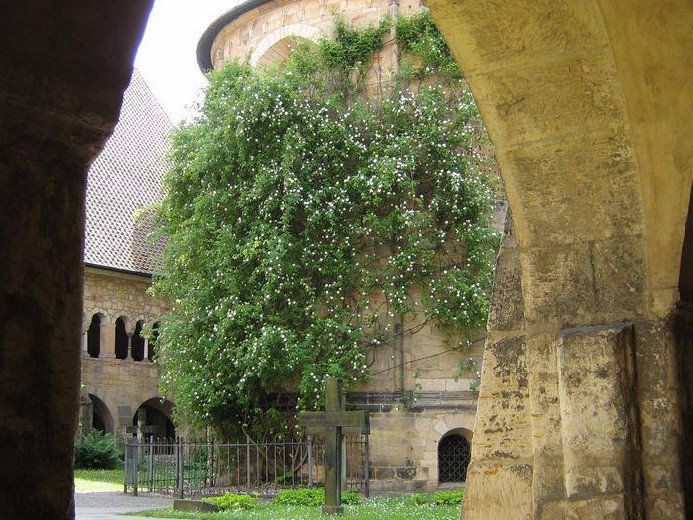 The preparation of the rose garden should be done at the end of the summer. But for a start, experts advise to decide on the winter-hardy characteristics of growing in the bushes. After all, each of them requires special conditions for wintering.
The preparation of the rose garden should be done at the end of the summer. But for a start, experts advise to decide on the winter-hardy characteristics of growing in the bushes. After all, each of them requires special conditions for wintering.
Remember that young seedlings that have not yet wintered, regardless of their genetic predispositions, need outside help. It consists of a special pruning, weatherization of the trunk circle and branches. Mature plants, which are highly resistant to low temperatures, do not need these procedures at all. They only hurt. Each variety of roses -, - has its own characteristics of wintering, so it is important to study the characteristics of the variety before. The most winter-hardy professionals call park roses, as well as in the everyday name "ostinki". They are not afraid of cold weather and tolerate harsh weather conditions. Therefore, no need at all.
But the most sensitive to temperature drops are considered and. If there are such specimens in your garden, then they will not live without special training until spring. 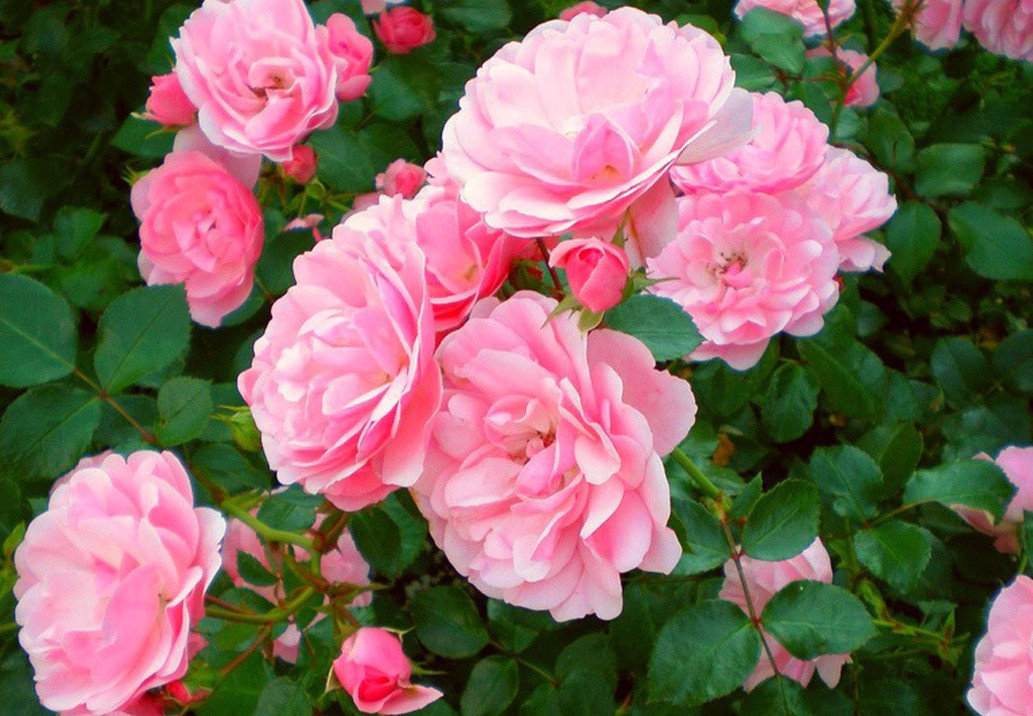 Important! For the successful wintering of roses in the last weeks of August, it is recommended to minimize watering and stop feeding. From this period, the bush requires periodic introduction, which accelerates the lignification of young branches and the central trunk.
In comparison with the previous group, the undersized varieties and have turned out to be more stable. They need to be warmed, but it is important not to overdo it with protective structures. Otherwise, the plant will die not from cold, but from heat.
Important! For the successful wintering of roses in the last weeks of August, it is recommended to minimize watering and stop feeding. From this period, the bush requires periodic introduction, which accelerates the lignification of young branches and the central trunk.
In comparison with the previous group, the undersized varieties and have turned out to be more stable. They need to be warmed, but it is important not to overdo it with protective structures. Otherwise, the plant will die not from cold, but from heat.
If you find it difficult to determine a specific group on your own, do not despair. In such situations, experienced growers are advised to take care of or around the stem of the plant and to provide a fabric cover for the aerial parts of roses for the winter.
Such activities will protect the culture from excess moisture and contribute to the formation of a suitable microclimate. The main thing is to guess the period when the need for warming arises. After all, too early structures will harm to the same extent, as belated ones. 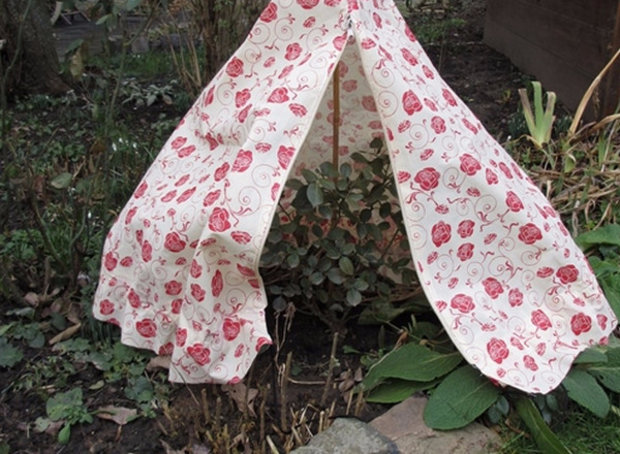
Choosing covering material
The most common mistake of many beginning flower growers is the very tight wrapping of flower stalks in covering material. Although on the forums, newcomers, even unaware of their mistake, often complain about the quality of the purchased insulation.
But experts say that for the successful wintering of these beautiful flowers do not need additional costs. Sheltering roses for the winter is quite possible to implement improvised means. Let us analyze in more detail which of the materials is better to prefer.
Did you know? In England, the tradition of giving a declaration of love to give 2 yellow roses is still preserved, and white buds are symbols of eternal love. That is why brides all over the world prefer to see these flowers in wedding bouquets.
Purchased
From the store assortment for the preparation of plants for the winter fit. It is the most common and affordable insulation. Experts advise this material for more sensitive varieties, since it, when loosely wrapped, retains the inner layer of air and does not interfere with the oxygen exchange processes.  A similar effect can be achieved from geotextiles,. The only drawback of these substances is the financial cost of their purchase. How best to hibernate roses, you can find out by reading the recommendations for care.
A similar effect can be achieved from geotextiles,. The only drawback of these substances is the financial cost of their purchase. How best to hibernate roses, you can find out by reading the recommendations for care.
Improvised means
In preparation for the winter, many rose growers, in order to save, resort to a suitable covering material for plants. In this case, the spruce leaves, fallen leaves, sand, rags, worn sacking are used.
And for hybrids that are very afraid of the cold, often use old blankets, plywood and wooden houses, foam plastic. The main task of hostesses is reliable protection of the root system and the stems from adverse weather conditions. For resistant varieties enough to bend the branches and insulate them with scraps. But sissies need a denser “fur coat”.
Important! For shelter you need to stock up on fresh dry foliage. Wet material will destroy the plants.
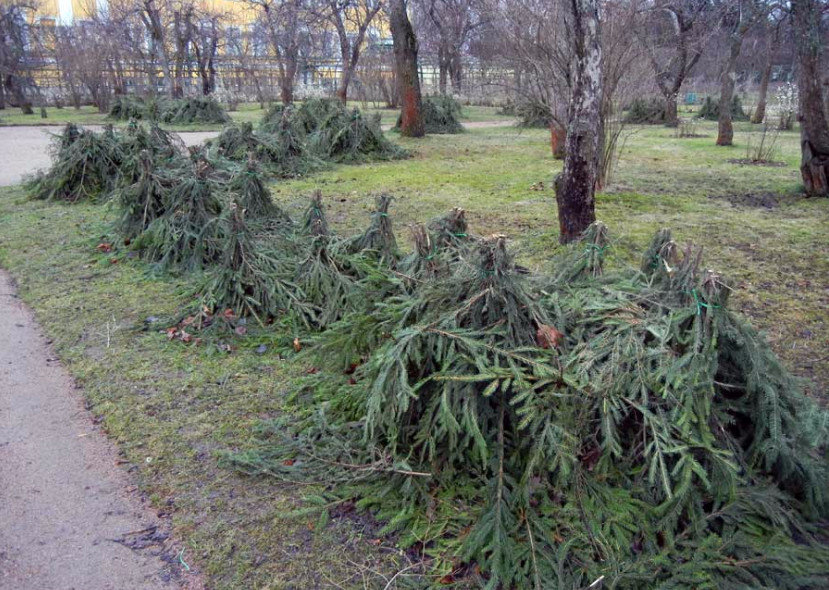
Types of shelter
Experts identify several technologies for insulating plants to cold weather, but in all cases they emphasize the need to leave an air cushion between the stems and insulation. Consider the main features of each type.
Air dry
Experts advise this method for non-winter-hardy and Floribunda. Its advantage is a stable temperature and excellent ventilation. Under the material, the thermometer column below 4 degrees of frost never falls. In addition, the chances of root loss are low. Let's look at how to cover the air-dry method.
In practice, everything turns out to be very simple: you need to prepare a frame of metal rods and some insulation. His role can play aspermine, and even plain cardboard. To the wind did not reveal your structure, it is desirable to secure the material securely with a string. And the house will save from moisture, with which it is necessary to cover it from above. Bottom edge of the shelter must sprinkle with earth. 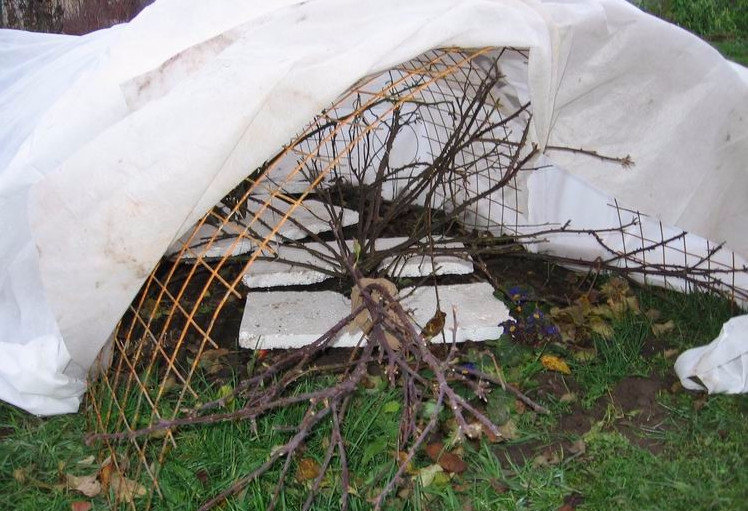 Did you know? The famous Egyptian queen Cleopatra went down in history not only as an indescribable beauty, but also as a zealous admirer. For all the solemn events held with her participation, banquet halls were prepared, where the floors were thickly carpeted with petals of these flowers. In special cases, flooring reached a half-meter height. Moreover, the queen during her walks to the gallery loved to enjoy budding on the waves.
Did you know? The famous Egyptian queen Cleopatra went down in history not only as an indescribable beauty, but also as a zealous admirer. For all the solemn events held with her participation, banquet halls were prepared, where the floors were thickly carpeted with petals of these flowers. In special cases, flooring reached a half-meter height. Moreover, the queen during her walks to the gallery loved to enjoy budding on the waves.
Shield
There is nothing more suitable for. Compared to other groups of flowers, they are the last to shed leaves and require special attention before the onset of cold weather. During this period, it is important to trim the remaining cuttings with leaf plates, as well as young shoots, remove the lash from the supports and tie them. Then, on the ball of lapnika spread out near the bush, you need to put the formed bundle and pin it firmly to the ground with a bent rod.
When the plant is fixed in a lying position, on top of it on both sides cover with wooden shields to form a triangle. The dimensions of the building must correspond to the length of the branches and be at least 85 cm wide. 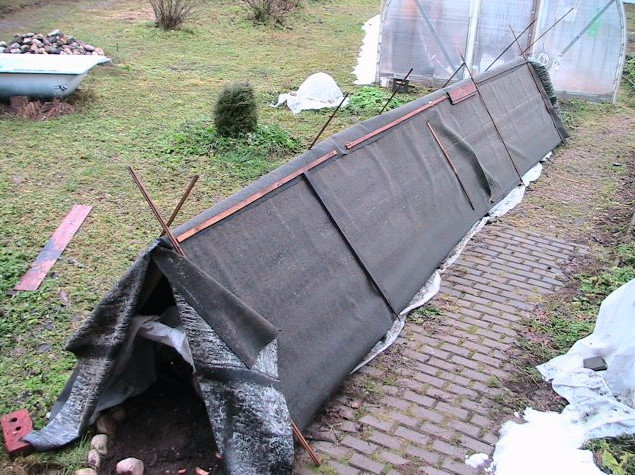 The lower edges of this house must be fixed with wooden pegs, otherwise it will disperse with time. The construction is covered from above, including from the end sides. Before the onset of frost its edges need to be raised, which will ensure good ventilation and will not allow the roots to get warm. And before the first frost, do not forget to lower the polyethylene and sprinkle it with soil on the bottom.
The lower edges of this house must be fixed with wooden pegs, otherwise it will disperse with time. The construction is covered from above, including from the end sides. Before the onset of frost its edges need to be raised, which will ensure good ventilation and will not allow the roots to get warm. And before the first frost, do not forget to lower the polyethylene and sprinkle it with soil on the bottom.
Important! Pink whips in preparation for the winter should be tilted in the direction of their growth. In some cases, at the base of the shoots, it is recommended to supply oval non-metallic supports, which will allow the branches to bend down smoothly. This technology is very convenient for warming climbing varieties arranged in rows. But in the case of warm winters, it is important to control the temperature and airflow inside the house.
Some flower growers talk about the impracticality of shield-type plant insulation, explaining their position by the lack of space in a small area. For such situations, experts advise that the associated pink branches should be fixed with a column to wooden supports stuck into the soil. 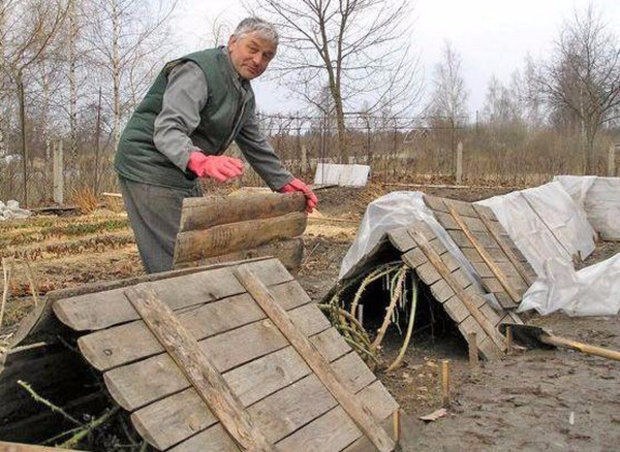 Some owners make special pyramidal skeletons of metal rods, but in such cases it is better to avoid direct contact with the lash of the bush. From above, the design is wrapped with fiberglass, spond, or ordinary sacking, fixing the canvas with bundles. And after that cover polyethylene film. At the same time, ventilation passages should be left, otherwise the flower will die from overheating.
Some owners make special pyramidal skeletons of metal rods, but in such cases it is better to avoid direct contact with the lash of the bush. From above, the design is wrapped with fiberglass, spond, or ordinary sacking, fixing the canvas with bundles. And after that cover polyethylene film. At the same time, ventilation passages should be left, otherwise the flower will die from overheating.
Did you know? Muslims are very kind to. Since ancient times, they believe that these flowers are the gift of Allah, and no one is allowed to stomp their petals with their feet.
Shelter jute bags
Jute bags are best used for growing in open ground. To this end, after the soil in the near-circle wheel is loosened and covered with a layer, the crown is warmed with a baggy shelter filled with dry foliage or lapniki.
First, a canvas without a bottom is put on the crown, after which it is tied at the starting point of the growth of the branches. Then it is tightly filled with filler and tied up. Boles are hidden in burlap or wrapped with spruce branches.
If we are talking about specimens that are rooted in tubs and are only brought into the garden for the season, they are sent for the winter. 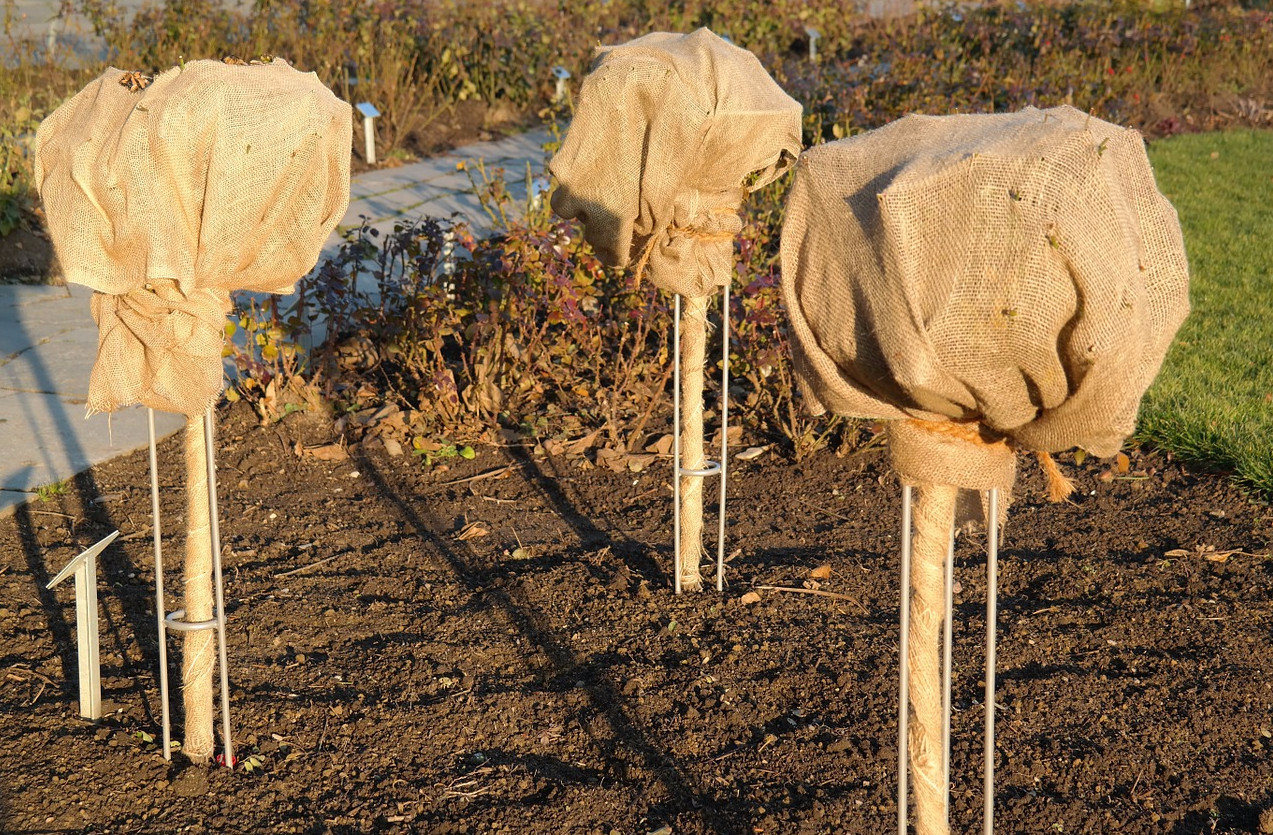
Basic rules for shelter
Than to cover for the winter, except lapnik, we found out, walking along the basics of different technologies, and now we will dwell in more detail on the key rules for preparing rosaries for winter.
Regardless of which heater and method of its use you prefer, it is important to carry out a set of preparatory works. It starts when the bushes shed their leaves.
The first thing to do is cut from the plants damaged, dry and underdeveloped branches. It is also important to remove the remaining foliage, because pathogenic microorganisms are very likely in the half-dead cuttings. So that the shrub does not hurt fungal and bacterial, it is recommended to spray it with the preparation or “Maxim”.
Did you know? Ancient Roman warriors considered it an honor when, instead of a helmet, their head was covered with a wreath of. This flower has long symbolized victory, strength and courage. This headdress was called "chapel". And, according to linguists, the Ukrainian word "kapeliukh" originated from it. Hygiene of stalk wells is also important. First you need to get rid of, then remove the remnants of old mulch and fallen leaves. Only after the performed manipulations can we proceed to the weatherization of the root system and the crown of the plant.
If you take into account the peculiarities of rose varieties, preparation and warming will be carried out correctly, your flowers will survive until spring in their integrity and safety. But do not take shelter as a panacea. This is just one of many ways to protect the bushes from the cold. In addition, it is effective only with complex preparation, which begins with irrigation, fertilizing and soil care.
Was this article helpful?
Well no
Blooming roses - a real pleasure for the florist. You can endlessly admire the bizarre curves of rose petals and their shades, breathing in the delicate scent of roses. But an experienced owner of a beautiful flower knows that in order to guarantee this enjoyment for several years, a noble and sensitive plant needs proper care. With the onset of autumn requires special attention. Preparing for winter in the care of the rose - a crucial moment for the florist. The growth and development of the flower next year depends on the proper maintenance of wintering conditions. When preparing roses for winter, two things are important: first, how to trim the roses for the winter and second, how to cover the roses for the winter. All in order.
In order for your beloved roses to endure the harsh conditions and low temperatures, you should prepare the plants for winter well in advance.
The main types of autumn care and preparation of roses for winter:
- The plant is gradually reduced, and watering is stopped in the second half of August.
- Roses - delicate flowers. Their young shoots are not able to preserve viability, therefore it is necessary to “help” the plant to stop the emergence of new shoots, to begin the process of the main shoots becoming wooden. To do this, from the last week of August, adjust the feeding. We make sure that nitrogen is not present in the fertilizers used, and potassium and phosphorus, on the contrary, are preferred in this period.
- At the same time, we only admire roses in a flowerbed, we do not allow cutting. It is necessary that the plant has completed the vegetative stage, from budding to drying. Do not rush to remove faded buds! Seed ripening after flowering is a signal for a rose: winter is coming, the flowering of this season is over.
- Removing the foliage is another mandatory element, which includes the preparation of roses for autumn in the fall. Roses - not deciduous plants, therefore, removes the leaves of florist. Whether you will carefully tear off the foliage or carefully cut the sheets - it does not matter if any method is allowed. The main thing is not to leave foliage on the plant, which can lead to an infectious disease.
- Continuing the prevention, carry out the processing of bushes and soil. For the plant any fungicide is used, you can also use the solution of iron vitriol. Thoroughly clean the soil under a rose bush, leaving no weeds, fallen leaves. After this, the soil can also be treated with a fungicide.
Perform pruning
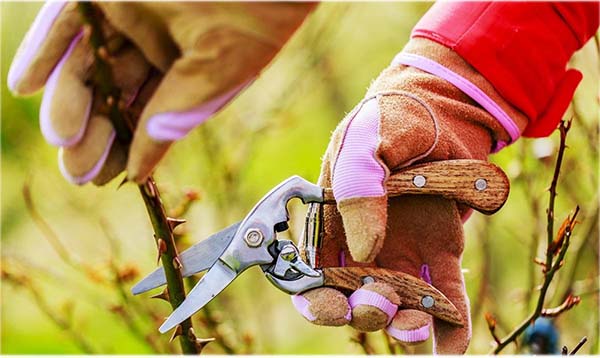
Preparation of roses for winter: pruning
An important stage in the preparation of a pink shrub for the winter period is pruning roses in the fall. A few shoots left after pruning make it easier to endure a cold winter than a whole bush. Plants that were left to spend the whole winter, were further weakened, often undergone diseases. Conduct it should be subject to certain rules, so as not to harm the flower.
The optimal time for pruning is the third decade of October. The procedure is preferably carried out in dry, sunny and calm weather.
Prepare the tools in advance: sharply sharpen the pruner and the hacksaw, which is used for the thickest shoots.
Having carefully examined the bush, it is necessary to cut off all the upper parts that may be susceptible to bacterial diseases. If there are small unblown buds on the plant, they are also cut off, as are the diseased branches.
It is necessary to cut the young stems that are not stiff. Such shoots, if they are left, can rot, and then infect the entire bush with fungal diseases.
So, for the winter leave the strongest, powerful and well-developed shoots. It is enough to leave from 3 to 5 shoots for the winter, trying to make them evenly spaced.
Video "Pruning and sheltering roses for the winter"
Rules for pruning roses for the winter
Inexperienced growers often ask the question, how to cut roses for the winter? Experts identify these types of pruning roses for the winter:
- Short
For polyanthus (many-flowered, forming a strong bush) roses use short pruning. Shoots are removed almost completely, leaving only the base for the winter (2-3 cm from each shoot). At the same time make sure that the sleeping buds of roses remain (2-3 per bush).
- Average
For hybrid tea roses, medium or moderate pruning is used. Weak shoots are removed completely. The height of the left stiff shoots - 25-30 cm, the number of sleeping buds on them - 4-5.
- Long
In preparation for the winter of park, English and Bengal roses perform a long or gentle pruning. The same species is suitable for tall hybrid tea roses. At the same time, only one third of the stem is removed, keeping from 8 to 10 buds on the remaining part.
Regardless of the method, when pruning, perform an oblique cut over the bud, which is swollen, but not sprouted. The distance between such a kidney and the point of cut is from 0.5 to 1 cm.
Completion is completed with the treatment of shoots left for the winter. To do this, use any available disinfectant. After the treatment, the hiding of the rose bushes is carried out and the preparation - sheltering the roses - proceeds to the next stage.
We harbor roses for the winter
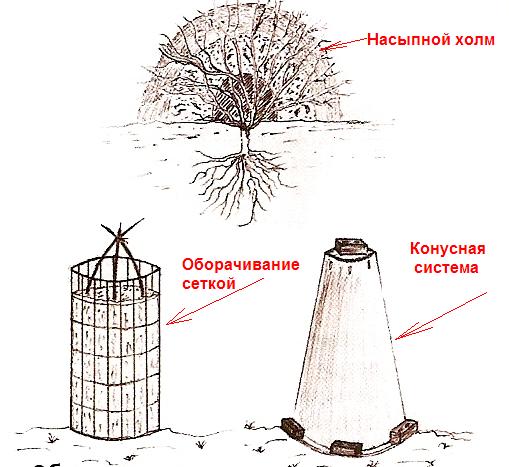
How to cover roses for the winter
For the roses in the garden to feel comfortable in the winter, safely overwinter and endure the winter cold, they need to be covered. Roses cover when cool weather is finally established, and during the week the temperature does not rise above + 5 °. The rose can also bear light frosts.
Consider how to save roses in winter. Cover roses can be different.
Prikopka
Choosing such a method, for the shelter of roses is used, first of all, soil soil. The bush first tucks to a height of 20 to 40 cm. Some gardeners completely bury the entire bush. But it is possible after the first layer of shelter - hilling - to use dry leaves, wood shavings or sawdust, as well as branches of spruce branches. They cover the upper parts of the shoots, which after hilling were above the ground.
Air (dry) shelter
In this method, the roots of the plant are also warmed with a layer of foliage or needles. And the bush trimmed for the winter is retained with the help of a specially constructed structure, a kind of carcass or a protective dome. His goal is to protect the rose from wind and frost by creating a suitable air environment inside.
Frame construction set over each bush at an altitude of 0.5 m. You can also build a frame over the entire flowerbed or rose garden.
In practice, various types of frame structures are used: pyramidal, spherical, cubic. For the frame, you can use metal rods or arches used in garden beds.
Having built a frame, you need to fix material on it for warming. Kraft paper, burlap followed by a layer of film can be a suitable material. In recent years, gardeners are increasingly using nonwoven fabric as insulation and remain satisfied with the results of its use. The main task is to carefully and securely fix the insulation, so that during windy weather and precipitation the construction protects the rose from rain and snow.
Wrapping
Tall roses can be covered for the winter in a different way, wrapping each plant in a nonwoven fabric - lutrasil. Metal bar in this case is also needed. It will perform the function of support for the stem. Wrapping begins with hilling the roots. Then the shoots of roses are wrapped with insulation and properly secured, securing the cocoon from below to prevent access to the cold air.
Video "How to cover roses for the winter"
Features shelter roses of different types
Experienced gardeners have developed rules on how to cover times for the winter. Applying their tips will help prepare your roses for winter.
Climbing Rose
Climbing roses do not prune stems. The shelter of a climbing rose for winter requires only pinching healthy shoots before hibernation, and only sick shoots are cut out. Long lashes of roses require careful handling. Preparing for the winter, the escapes of climbing roses are covered with earth. But before the whips are on the ground, they need to prepare a place for them. For this, sand and spruce branches are poured on the ground. The whips removed from the pedestal are gently placed on the prepared “pillow”, and then the lapnik is used again to cover the rose. The procedure is completed with a film, which is fixed on top of a spruce branch.
You can make a braid from the lash, which is placed on the prepared wire frame. From above arrange a protective canopy made of wood or lutrasil, and then also covered with foil.

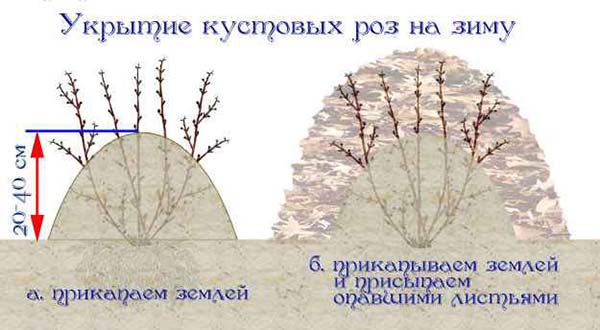
Park Rose
Many varieties of park roses are frost-resistant, and therefore do not require a special wrap. However, the young bushes of park roses need to cover the winter. Park rose shelter for the winter is performed with adverse weather forecasts, waiting for anomalous frosts.
The most suitable for park roses - prikopka or dry shelter.
Hybrid Tea Rose
Hybrid tea in winter will tolerate low temperatures with standard preparation methods for the cold season. Standard hilling or frame construction will help the rose bush to winter. The use of spruce leaves increases the level of comfort for a hybrid tea rose in winter.
Video "Shelter for the winter climbing roses"
Place of cultivation matters
Rose has its fans in all parts of our country. In this case, the place of growth of the flower does not matter. But in preparation for winter, the region where the rose grows cannot be ignored. Different climatic and natural conditions, different periods of the onset of cold weather make their adjustments to the standard procedures for preparing the plant for winter.
- Shelter roses for the winter in the suburbs are usually carried out in late October.
Other terms are possible, the main thing is the onset of stable temperatures during the week (+ 5-7 °).
- But the shelter of roses for the winter of roses in the Urals is carried out in September, as the air temperature drops in the region earlier.
Ural winters are more severe, so roses need a multi-layered cover that will help save the plant during hard frosts. However, upon the occurrence of thaws, such a “blanket” can lead to the accumulation of moisture and plant rot. The following method of preparing roses for winter in the Urals helps to avoid this. Prepared for wintering and heaped shoots gently bend, so that they take the arched shape. Top cover with spruce leaves, foliage, cut raspberry shoots, etc. The received natural greenhouse is covered from above, using tarpaulin, roofing material, synthetic materials. The ends are left ajar, allowing ventilation inside the shelter.
Separately growing roses can be saved by constructing a special box of cardboard boxes. Around the trenched bush out of the boxes make cardboard walls about 50 cm high, so that the embedded shoots do not rise above the cardboard walls. Rose roots fall asleep and empty space in the box around the bush with dry foliage, needles, straw, shavings, sawdust, covered with spruce leaves. On top of the box with a rose set frame with lutrasilom. Such a construction helps to preserve roses in the conditions of the Ural winter.
Acquainted with the rules of preparing roses for the winter, you will be able to create comfortable conditions for the plant. So, next summer you will again enjoy the beautiful color and delicate aroma of your favorite flower.
A beautiful rose deserved the title of queen of the garden and flowers has a rather capricious temper. In order for its lush bushes to delight with flowering and unique aroma, the plant requires constant care. Not all varieties are able to withstand Russian winters, so on the eve of the onset of cold weather and snow, it's time to think about how to cover the roses for the winter with covering material, and, importantly, which one to choose. Now the market offers a huge amount of goods.
Very often, gardeners do not think about what kind of shelter to choose, and take the material that is at hand. What to do? Buy in specialty stores a special non-woven fabric or build protection yourself? The answer to this question does not lie on the surface and requires a diversified approach taking into account climatic conditions, financial possibilities and even the most common covering material for roses for the winter is polyethylene, as well as dry foliage and spruce fir, spandbond, geotextiles, lutrasil. We will talk about them in detail in our article.
Polyethylene
Polyethylene is perhaps the most popular material among gardeners and gardeners. The scope of its use is very large (greenhouses, greenhouses, beds in the spring, etc.). However, with the advent of more modern and technological materials on the market, he gradually began to lose ground. One of the main drawbacks of polyethylene is that it does not breathe, that is, by blocking roses or any other culture with it, you block oxygen. A typical situation is when plants burn under polyethylene. Positive qualities - wear resistance, the ability to retain heat, low cost. This covering material for roses for the winter can be used in emergency cases and with caution.
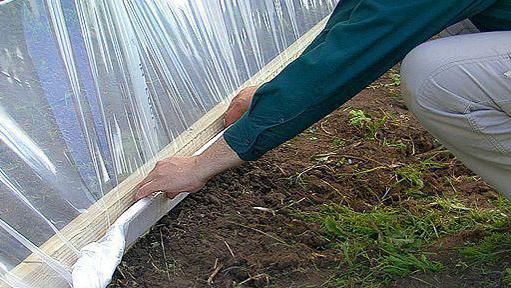
Shelter technology
The technology is simple. Pre-prepared rose bushes are twisted and tied up in the form of arches (not too high) to the arcs previously set on the bed. Then put ruberoid, and on top - polyethylene. It is important to press the edges of the material to restrict access to moisture. The main purpose of any shelter is to create an air cushion inside where warm air will circulate. In spring, the shelter is removed gradually: first, the end faces are opened so that the roses do not get stuck, and when the onset of heat completely releases the bushes.
Spunbond
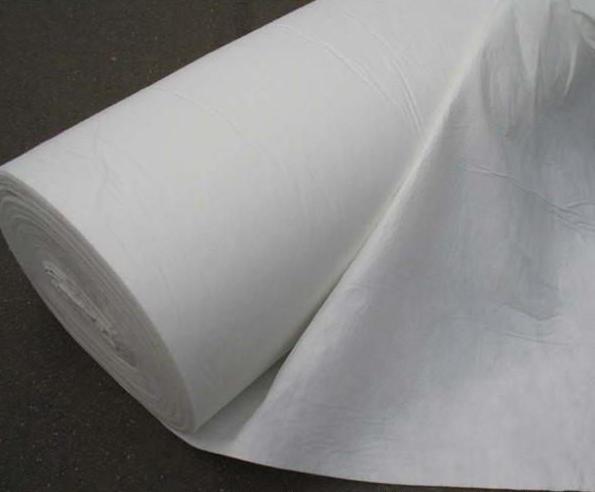
Spunbond is a nonwoven covering material (including roses for the winter), which has become a good alternative to the usual polyethylene. Its main advantage is its excellent value for money and functionality. Spunbond is able to create a favorable light mode for the plant (black, opaque, on the contrary, helps to fight weeds), protecting it from burning sun rays, which is important for roses in early spring. It quickly and easily passes air and moisture, without delaying it, prevents penetration of insects and rodents to the bushes, is durable and can be used for several seasons. Spunbond tolerates lowering the temperature to -55 ° C.
This covering material for roses for the winter prices (reviews about it are very positive) is very affordable. It can be used in different ways. For bush plants, you first need to build a frame of wood or put the arc, and already lay atop spunbond. It is also very convenient for climbing roses, which do not need to be removed from the supports, but rather wrap the material and fasten it with clothespins or a construction stapler. Standard types to bend down to the ground is almost impossible, therefore they should be wrapped. You can make an improvised bag of non-woven material, or just carefully wrap them with the stem of the plant, and carefully secure the top with a soft rope.
Spandbond has a high rating, judging by the reviews. Gardeners note that it is reliable, easy to handle (storage, assembly, drying) and effective. Rose bushes and other plants winter well, and you can also use a canvas for other purposes in a vegetable garden after winter.
Geotextiles
Timely covering material - a measure necessary if you want to save the plants until next year. In recent years, geotextiles have become increasingly popular. Initially, it was created for the construction industry, however, due to its structure and properties, it has become indispensable in gardening. Geotextiles are excellent for protecting plants from mold, frost and rodents. Advantages of the material: strength (not subject to rotting), the ability to pass air and moisture, allowing excess condensate to evaporate, price availability.
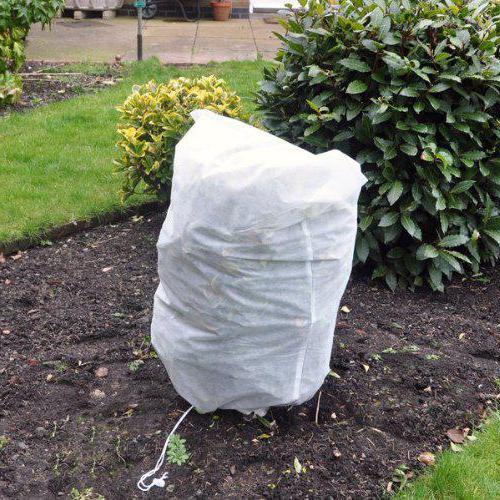
Shelter technology is similar to that when using a spunbond and is described above. In gardening, it is best to use geotextiles with a density of 200 g per square meter. Now in stores you can buy material not only for a cut, but also ready-made bags for sheltering roses and other shrubs.
Lutrasil
Popular covering material for roses for the winter, reviews of which are mostly positive. It was made according to a technology similar to the production of a spunbond, and therefore has similar characteristics. Positive qualities: durability, easy storage (enough to dry, roll and clean), eco-friendly, permits moisture and air, affordable. Varies according to density. For the shelter of roses for the winter, use a material with an indicator of 60 g per square meter. As for the comparison with the spunbond, lutrasil loses to it only in terms of resistance to ultraviolet radiation. Shelter technology is similar.
Fir branches and dry foliage
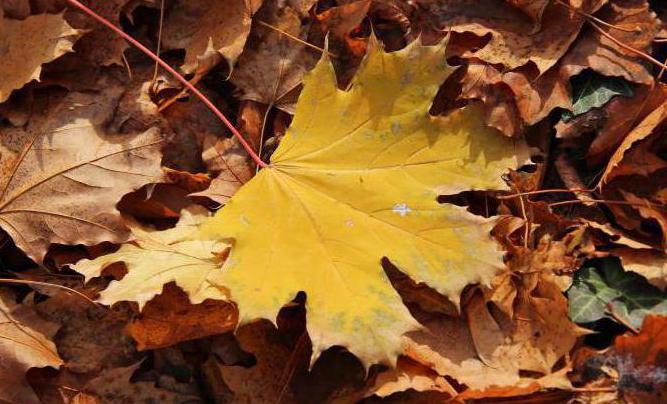
Dry leaves, which are formed in sufficient quantities in the fall, as well as reliable coniferous fir twigs are a traditional covering material for roses for the winter, which is considered one of the best. It is not expensive, although you will have to make time for a trip to the forest, and eco-friendly, helps to protect the plants not only from frost, but also from annoying rodents that can destroy everything in their path. Pine or fir twigs perfectly protects from cold wind, sleet and creates the perfect space inside the shelter with excellent ventilation. Under its cover drastic temperature drops are smoothed out and the detrimental effect of winter sunlight decreases.
But, like any materials, lapnik has its drawbacks. Firstly, harvesting of branches is allowed only from already felled trees in certain places or sanitary cleaning zone. Secondly, if the forest is located far away, then it will be problematic to stock up with spruce branches. Thirdly, there is a chance to bring along with the branches to the site of various pests or diseases. Therefore, walking through the forest, you need to carefully look at the trees from which you are going to take lapnik.
Technology Fir Tree Spruce

Before winter, roses are covered gradually, in several stages. The pruning procedure is required regardless of whether you are using a spruce fir twig or a synthetic. With a sharp pruner, the shoots of roses are pruned to a height of 40-50 cm, no more. Then remove all the leaves, earth spud after the first frost and sprinkle with peat. When the air temperature drops below zero (-6-7 ° C), the rose bushes are covered with pine spruce and dry leaves.
The use of branches of spruce or pine is allowed even for shelter climbing roses. To do this, the shoots do not need to be removed from the support, they are simply wrapped with branches, securing the latter with the help of soft ropes.
Covering material for roses for the winter: price
It is impossible to give exact information on prices, unless it is approximate. The indicator depends on the manufacturer, region and even season.
The price of polyethylene (popularly called “greenhouse film”) depends on its density. Thus, the highest grade material is from 10-15 rubles per meter. Reinforced polyethylene is more expensive - an average of 40-45 rubles.
The price of non-woven synthetic material is higher. For spunbond density of 17, 42, 60 g / sq. m with a canvas size of 3.2x10 will have to pay, respectively, about 170, 330, 455 rubles.
Approximately in the same range are prices for geotextiles. Canvas density of 200 g / sq. m costs 22-50 rubles per square meter.
Preparation of roses for winter: features
The process of preparing any plant for winter, including roses, is not as simple as it seems at first glance. First you need to hold sanitary and preparatory activities, and only at the final stage is required covering material for roses. How to cover the roses for the winter right? The question is relevant for a novice gardener, and for the more experienced.
First, you need to determine whether the plant is ready for winter. If the rose bush has red shoots in September, this is a sign of active growth. The plant is not ready for winter, it has not accumulated the necessary amount of carbohydrates, and the shoots have not woody yet. Rose needs help. To do this, the bushes are fed phosphate fertilizers, pinch the growing point and remove the flowering buds.
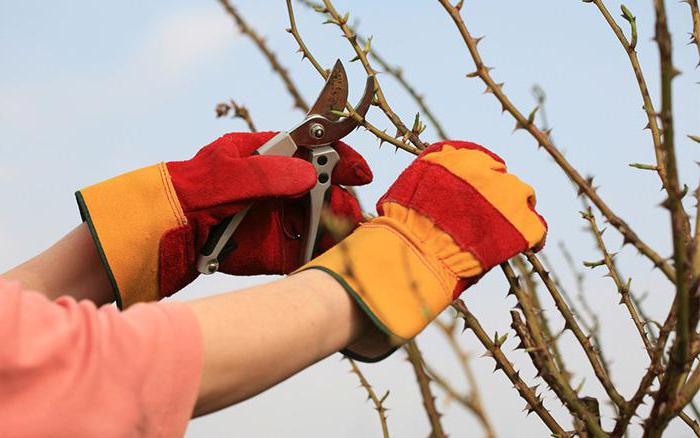
Secondly, from the beginning of September, loosening the soil around the roses and the process of plant formation should be stopped. This is required to prevent stimulating the growth of shoots from dormant buds. In late October - early November, all leaves are removed from the plant. This is done in order to prevent their rotting in the winter under cover.
Thus, before making a shelter for roses for the winter with a covering material, the features of the latter should be carefully studied. And weigh all the positive and negative points.
It happens that certain varieties of roses continue to bloom until the very end of autumn. It is not necessary to interfere with this wonderful process. But, as soon as the autumn frosts begin, it is important to start preparing flowers for insulation. To do this, the first thing you need to free the lower parts of the bushes from the leaves. This should be done carefully so as not to damage the roses. We also have information about Siberian Iris: planting and care in the open field.
Of course, you need to remove the leaves not only from the lower parts of the roses, but also those that have already managed to fall for the winter. It is not necessary to remove all the leaves from the bush right away, because for a plant it is a great deal of stress. The process should be carried out gradually, but the leaves do not leave, otherwise, in the winter they can begin to rot and damage the safety of the entire bush.
Hilling
Before you cover the roses for the winter you need to spend hilling roses. This should be done only in dry weather. Take 5% solution of ferrous sulfate. They spray the stems, as well as the soil under the flowers. It is possible to use other drugs for hilling, it is important that they are able to protect the bushes from fungal infections.
When processing is finished, the stems should be allowed to dry. To protect the bush from possible autumn rains, it is possible to spread a film around the rose so that the soil stays dry in any weather.
We harbor roses for the winter
Only after all the preparatory activities have been carried out, you can look for suitable dates when to cover the roses for the winter in the Moscow region and engage in this process. Hurry is not worth it until the weather is warm, let it be wet or dry, the bushes are not in danger. Moreover, if you hurry up and cover the beautiful bushes too early, they can begin to sweep and die before the onset of winter.
The critical temperature for many species of these flowers is minus 7 degrees. So, as soon as such frosts have already been established at night, it is necessary to cover the bush. It is best to make coverings from the spruce branches: a small hut is made with the help of fluffy branches for rose bushes.
If the roses of such varieties that pull up, then they need to be removed from the support and be sure to lay on the ground at full length (you can twist the ring). Under the roses and on them, too, put lapnik. The process of such a shelter is long, but only in this way will it be possible to preserve roses.
Tip! If you grow park roses, they are winter-hardy. Therefore, for them will be enough light dry shelter. For example, you can use ordinary wooden boxes or similar designs.
Of course, the best way to shelter roses for the winter, as noted above, is a lapnik. They manage to protect the roses, regardless of the specific type or variety. You can also use oak leaves that do not rot for a long time to protect. For greater protection from the top, it is recommended to put some kind of non-woven material or roofing material, at the very least, a plastic wrap. But it is important to provide ventilation.
So, when to cover the roses for the winter? As soon as the temperature at night dropped to 7 degrees of frost and lasted for several days. Roses are afraid of frost, but do not cover them too early in the fall, it can only harm the bush.
There are many ways to hide roses for the winter. Each of them has both advantages and disadvantages.
The most traditional and, unfortunately, still the most common way is to cover rose bushes with fir branches. This method has almost no flaws: relatively dry, warm and, according to many sources, this shelter protects against the invasion of mice. And everything would be fine, but we must take into account that the summer residents in the Moscow region are becoming more and more (Garden partnerships grow on the ground near Moscow like mushrooms after rain); a growing number of summer residents prefer roses rather than cucumbers and potatoes; and the spruce forests, alas, no longer becomes. As for protection from mice, I can say from my own experience that hopes for lapnik in this regard are clearly exaggerated. In the past years, applying a spruce branch, more than once in the spring, they found a mouse nest in the very center of the rose bush. So much for the protection.
The second known method is to wrap roses with burlap or, more recently, more often, with a nonwoven covering material. I can’t say anything bad about this method, except that for such a shelter it is not recommended to save material. You should buy a thick covering material and wrap more than once. It is worth considering which side of the material is outside and which side is inside. One of the sides of the nonwoven material, as a rule, worse water passes. This side should remain outside. All this is good, since the material (the cost of it) for your favorite roses is not a pity. Unfortunately, to remove such a shelter without damaging it about the pink thorns is not easy. Yes, and the properties of waterproofing overwintering material loses.
As an additional cover, use wooden boxes or old tires, roofing felt. I am totally against tires and ruberoid. Probably I can not accurately explain my position, against and that's it.
A good shelter should protect roses not only from frost, but also from moisture. Sometimes the latter is even more important. Roses often do not freeze, and soak.
To protect the roses from wetting, it is worth pouring soil to the base of the bushes. If you have peat on the plot, everything is fine. And if, like me, clay? Wet clay benefits roses will not bring. Sand will help. To benefit from such a powder was more noticeable, came up with this method. I collect moss in the forest. Benefit of it in our forest abound. I cover the base of the bush with a layer of moss, pour sand, another layer of moss, again sand. Plus moss is that it does not allow the frost to dry the branches and at the same time prevents overmoistening, and the sand helps to keep the moss. So each for each other and hold on. In addition, moss has known antiseptic properties. It prevents the formation of mold.
So, at the end of September - the beginning of October (right after steady night frosts) I cut roses, leaving hemp 20-30 cm. I remove the remaining leaves. I process with copper (the simplest is copper sulfate) from mold and fungal diseases. I spud sand with layers of moss, as I wrote above, and leave from the dacha until the moment when the soil ceases to thaw in the daytime. Now you can and hide more seriously. However, if the winter will be snowy, and this is quite enough (I try not to grow capricious southern roses). For more peace of mind, I close it with a plastic box from under the fruit, fasten it with pegs on all sides so that the wind does not blow away, and on top of it is a piece of polyethylene. But only from above, without going deep on the sides. Roses should be aired. We do not have winters without thaws. If I could be in the country all winter, close to my favorite roses, I could, depending on the weather conditions, change the degree of shelter. And so, it is better to not open than to overheat.
Here are some simple rules and tips to help you avoid unpleasant surprises in the spring:
Cut flowers should stop in mid-August. Do not touch the buds until plant cover. In this case, the rose will not give new shoots that do not have time to mature before winter. The danger of their late appearance is that their freezing out often leads to the death of strong healthy branches of the previous order.
In the first decade of October, gardeners in central Russia need to clear the rose bushes from foliage. There is an opinion that it should be maintained for a more comfortable wintering. But it is not. Leaves must be cut off, starting from the lower branches. Then they should be removed away from the plants. Experienced gardeners recommend burning dry foliage, because spores of disease-causing fungi can remain on it.
Do not feed roses before shelter. You should not do this in the middle of summer. It is enough to feed plants of this look in the spring or in June. This will provide them with nutrients for the entire season.
Do not cover the roses ahead of time. This should be done only after the first frost. Despite the fact that the weather in central Russia in recent years is unstable and full of surprises, and the first frosts may turn out to be strong, nothing bad will happen to shoots and the root system. But the early shelter of bushes can lead to vypryvaniya roots.
Air-dry shelter
A bright and fragrant rose can be a great decoration for any garden. Depending on the variety selected, it is possible to split a flower garden from miniature bushes on a plot, grow a luxurious standard rose or decorate a fence with climbing species. However, do not forget that the flower is quite capricious and requires special care, for example, if you do not provide winter shelter for shrubs in time, they will freeze at low sub-zero temperatures. How to choose the right covering material for roses? The choice depends on the variety and variety of the plant.
Winter hardiness of roses and features of planting
Residents of the central and northern part of the country before planting roses in the garden should carefully study the catalog of varietal seedlings. If the winters in the region are severe, but little snow, then winter hardiness should be given special attention. It is equally important to determine the size of the shrub; for undersized and miniature specimens, it is much easier to choose a covering material for roses. High standard types or large climbing ones will require the construction of special "house" structures.
To facilitate the autumn work on the shelter of shrubs, it is recommended to plant them in groups, rather than individual flower beds scattered throughout the site. Also, gardeners should be aware that the last feeding organic matter and mineral compounds containing nitrogen, should be carried out in early August. Later fertilization stimulates the growth of young shoots, which in the run-up to winter reduce the frost resistance of the plant.
Covering material for roses - which one to choose?
Most often, the gardener does not think about what type of shelter to choose and uses the material that is near him. You can buy a special non-woven covering material for roses or build a defense yourself. The most commonly used materials are:
- piece of plastic film
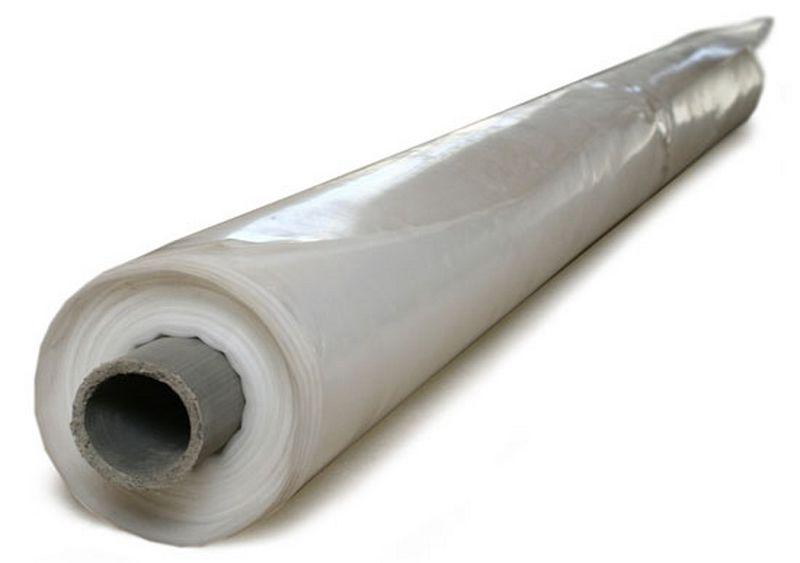
- geotextiles
- lutrasil
- spandbond
- lapnik,
- dry foliage,

- rags or burlap,
- an old blanket or coat
- plywood or boards.
The use of one type or another depends on the type of shelter. So, large roses with good immunity and excellent winter hardiness are enough to bend down and fill with lapnik. For more delicate and sensitive specimens will have to build a "house" of the boards or plywood, additionally wrapped rags or sacking.
Ways to hide roses for the winter
Provide roses winter shelter can be in different ways. The choice of gardener depends on the availability of free time, material and frost resistance of shrubs.
Air-dry shelter
This method of shelter is one of the most reliable, but at the same time time consuming. A carcass of plywood boards or sheets is constructed above the landings, additionally covered with polyethylene or rags from above, if the winter is expected to be too cold. When installing the frame, you need to take care that it can withstand the weight of the snow and not collapse. The height of the hut should be just above the tops of the bush. The advantage of this design is that the plants in it do not vypravayut, and in the spring you can adjust the temperature of the air in the "house", opening the doors.
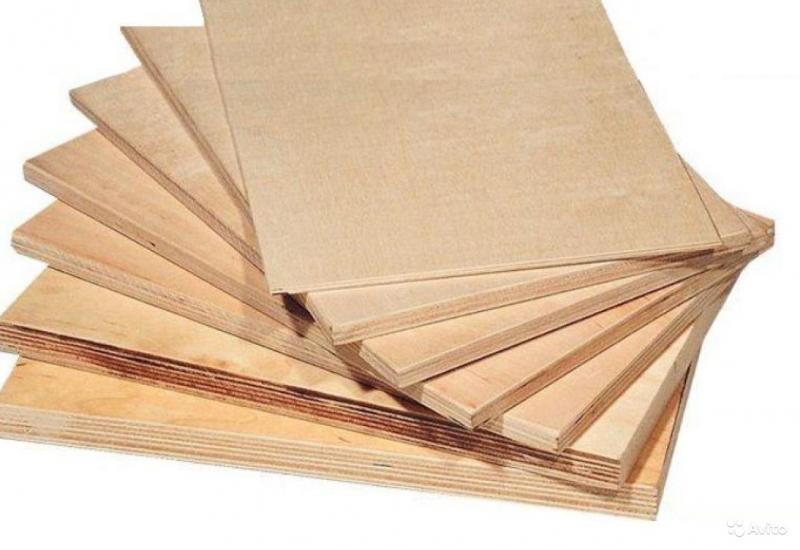
Spruce shelter
A good covering material for roses can serve as a spruce branches. For undersized shrubs suitable method with hilling. As soon as the night frosts become permanent, the bush should be sprinkled with earth or peat to a height of about 1/3, and the upper part be lined with lapnik. When the snow falls on the fir branches, you can throw a snowdrift.
The branches of large specimens are first bent to the ground and fixed at a level of about 10 cm from the surface. For fixing, you can use garden metal studs, bars or bricks. It is important to put a layer of mulch from dry foliage or lapnik on the surface of the soil so that the shoots do not touch the ground and freeze. Top should be spruce branches and if necessary, build a snowdrift.
Shelter made of nonwoven material (geotextiles, lutrasil).
Geotextiles are an excellent covering material for roses. It is quite easy to build a “winter house” with its help; in addition, it not only protects against frost, but also removes excess moisture, preventing the formation of condensate during the thaw period.
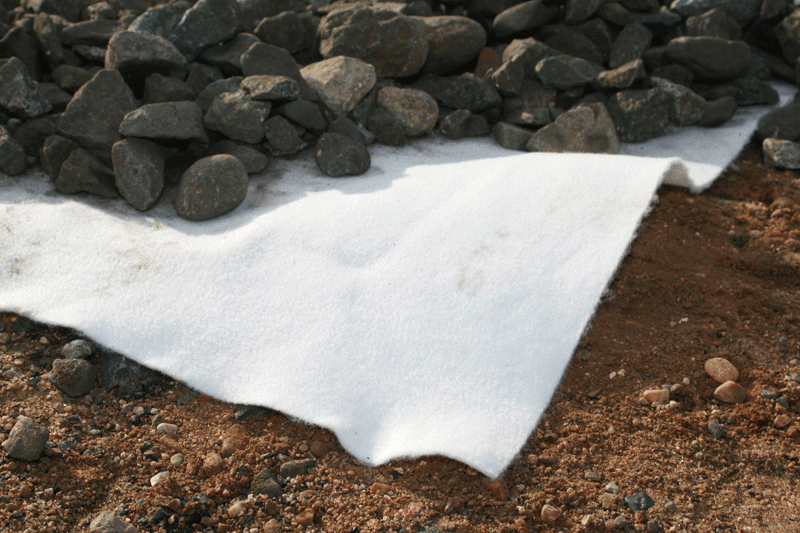
It is necessary to create a low frame over the shrub, you can use metal arcs, bars or bricks. The density of the canvas must be at least 200 g / m², the material must be folded three times, otherwise the expected effect is not achieved. Prepared frame covered with geotextile or other similar material and securely fastened around the perimeter. It is better to overlap the edges with long boards and additionally press bricks, it is important that the holes through which cold air can penetrate are not left. In such a "house" roses successfully winter the winter, but in the spring it is necessary to lift the shelter in time, otherwise the shrubs will vypreyut.
The choice of winter shelter, depending on the type of roses
The choice of covering material for roses is influenced by their affiliation to one group or another. It is possible to distinguish bush, climbing and standard roses.
Covering bush roses is easiest. After pruning and removal of dry foliage, shrubs are spud using turf, peat or compost. Sawdust can be added to the selected mixture. In bulk, 1/3 of the bush is covered, young copies - up to half. From above roses are covered with spruce leaves or non-woven material, especially gentle and thermophilic varieties can be warmed with a rag or an old blanket. For spray roses also suitable air-dry shelter.
Climbing roses can be covered without removing them from the support; in this case, nonwoven covering material for roses (geotextile, lutrasil, spandbond) is useful. It is necessary to wrap the lash securely and fix the canvas with a stapler or clothespins. If it is not possible to leave the scourge on a support or the gardener fears that in such a state the plants will freeze out, then you can lay them on the ground. Previously on the surface of the soil lay lapnik or ruberoid, so that the branches of the shrub did not come into contact with the cold ground. Spud the base of the bush to a height of about 30 cm, it will protect the roots from freezing, and cover the top with spruce branches or geotextile, carefully securing it in places of contact with the ground.
Standard roses overwinter exclusively in an upright position, their trunk is too strong and cannot be bent. To protect the root system, plant spud, the higher it is possible to create a mound - the better. Particular attention should be paid to the vaccination site, which is located just above the root collar. Further, a crown made of nonwoven material is put on the crown. The fabric should be folded in 3-4 layers. You can wrap the bag around the tree with a soft rope, carefully fastening it in the lower part so that there are no holes left.
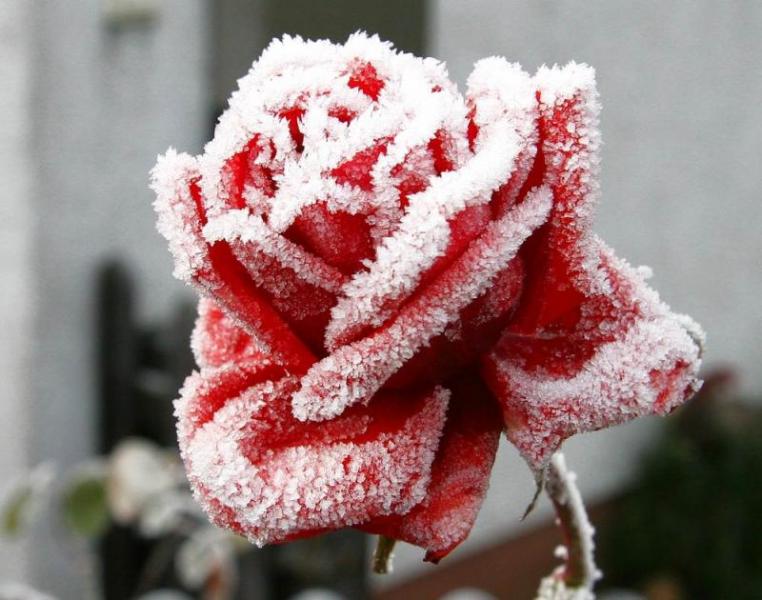
Basic rules for preparing roses for shelter
Regardless of the choice of covering material for roses, the preparatory work begins to carry out during the fall of the leaves. Dry and broken branches are cut, if necessary, adjust the shape of the bush. It is important to remove the remaining dry foliage, so that in winter there will be no pests and pathogenic bacteria on it. To do this, wear a thick mitten and hand hold on the branches from the bottom up, breaking off the leaves. For the prevention of diseases, it is recommended to spray the planting with fungicides and weed weeds. A layer of old mulch and fallen leaves are raked into a pile and burned. Only after performing these simple actions can you start organizing the shelter.
